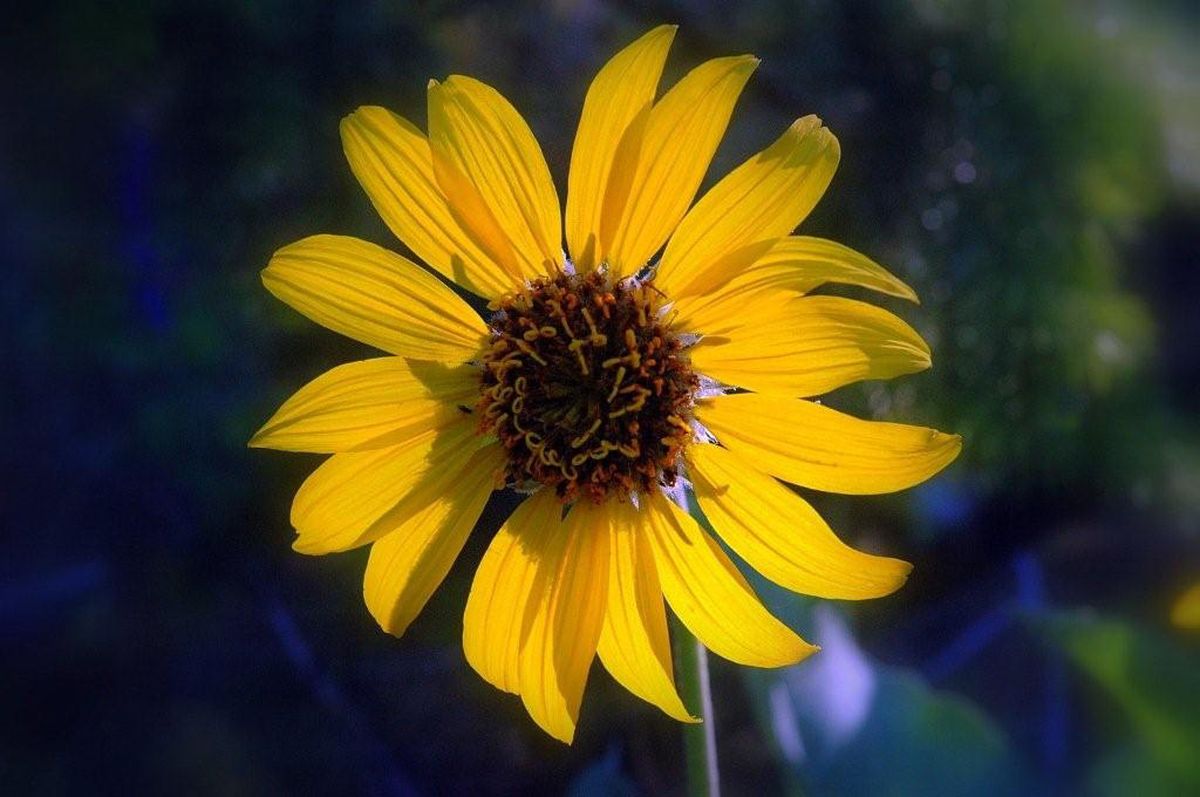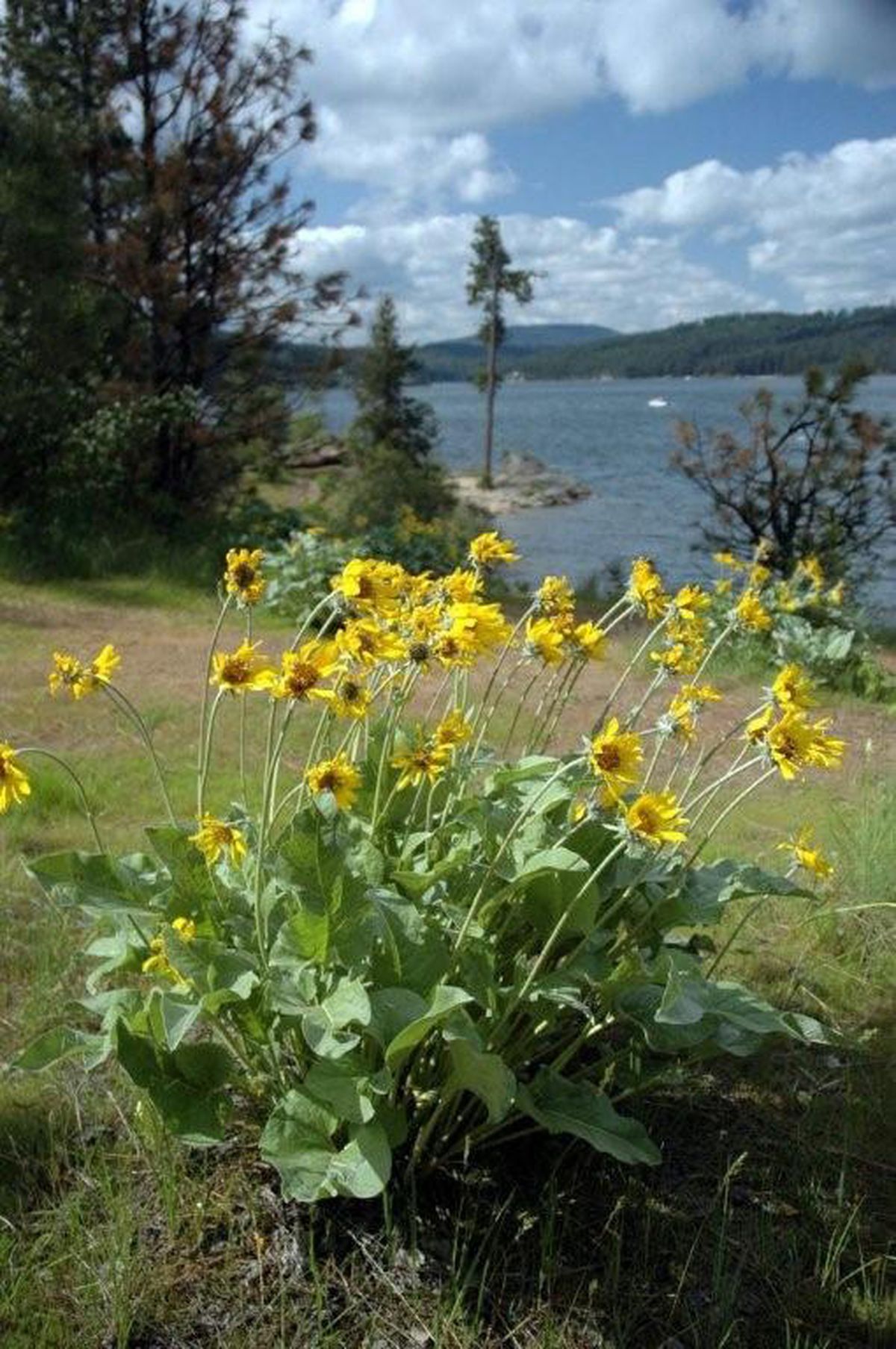Spring’s blooms grace landscape as well as palate
Corbin Point is on the south end of Tubbs Hill in Coeur d’Alene. The large showy sunflower, Arrow Leaf Balsamroot, can be found in large numbers on the dry, sunny, exposed slopes.Special to (Photos by Mike Bbrodwater Special to / The Spokesman-Review)
Nature has its own way to mark the seasons. Summer provides the rich scents of sweet grass and patches of pungent herbs, sights of summer harvests of fruits and vegetables and the buzz of honey bees collecting honey. Fall arrives with trees and shrubs glowing in yellows, reds and oranges. The stillness and white blanket of deep snow makes no doubt that winter has arrived. The wildflower display with its rainbow of colors mixed in with the new hue of green leafy plants announces that spring has finally made its presence known. Spring just may be the best season of the year.
Wildflowers can be seen erupting, some pushing through the remaining snow, all around the Inland Northwest. Years ago the Native Americans had to be thrilled to find fresh food sources after surviving through the winter on a dried mixture of buffalo meat and the previous year’s mashed plant bulbs called pemmican. For the Indians, spring wildflowers were much more than just a pretty sight. They provided the essential source of carbohydrates that we now associate with potatoes.
Almost every flowering plant out there has a history of use as a food source or medicine for the Indians and later for the pioneers arriving in the west. The plant histories help show what life was like before modern medicine and food production. These plants that we casually walk past in the spring have interesting and sometimes amazing stories.
Camas
The bulb of the Camas can be eaten at any season, but best in the autumn. Some Camas species are poisonous and can cause death. The edible bulbs have a potatolike flavor. Camas played a significant role in early Western history, more than any other plant. It was a chief vegetable diet of the Northwest Indians. It was used extensively by the Lewis and Clark expedition. Father DeSmet referred to Camas as the “queen root of this clime.”
Ox Eye Daisy
This common field daisy is generally overlooked as “just another wayside weed,” but the leaves of this plant are among the most palatable fresh wild greens available. The young basal leaves are best and have a sweet flavor. Gourmet restaurants sometimes serve them in salads. Clinical research suggests that the leaf tea may be useful as an antihistamine.
Checker Lily
The roots or bulbs of the Checker Lily were cooked which made them an appetizing and nutritious food. The bulb looks like a small mass of rice grains. The Indian tribes Okanagan and Shuswap and explorer David Thompson cooked the roots and immediately ate them, or they were dried for future use. The bulb grows relatively close to the surface of the ground and is easily extracted.
Wild strawberry
Western Indians prepared a tea from the green leaves of this plant. They ate the wild strawberries for colds even before vitamin C was known. Juice from the strawberry was mixed with water and used to bathe reddened eyes and used on sunburn. This juice was also squeezed into inflamed sores and often showed healing effects. A tea from the dried leaves was used for kidney trouble and relieving stomach distress.
Yarrow
Yarrow is considered a medicinal wonder. It has been used by the Indians to stop bleeding of wounds and cuts; as a poultice for burns and open wounds; used to cure fevers and colds; and alleviates toothaches. Pharmacists have extracted an alkaloid chemical from the plant. This chemical actually reduces the clotting time of blood.
Paintbrush
Paintbrushes are semiparasitic in that they use energy from other plants that grow near them. Through their roots they penetrate the root tissues of other plants and steal part of the host plant’s food. Some species of paintbrush have edible flowers. Care should be taken, however, because some of the plants absorb certain elements from the soil that can be harmful if eaten in large quantities.
These amazing plants can be seen flowering in the spring and early summer. However many of them are quite small, in the six-inch high range. Driving a car out into the country and into the parks on a wildflower excursion will be disappointing unless a walk is included. Hiding among the larger plants and under bushes, the smaller plants will provide a richer find for those who take the time to look. Wildflowers will be found in certain undisturbed locations. For example, Camas can be found on Tubbs Hill in Coeur d’Alene only in small patches on the northwest side of the hill near the Fourth Street entrance. But down by Grangeville entire fields of the pastel blue flowers can be found. It’s a beautiful flower that is worth seeking out.
Although these plants can be eaten, human encroachment into their space has severely reduced many of them. Tempting to try, some of them in a salad or preparing them for a meal, picking is strongly discouraged. In fact, some like the Calypso Lily (fairy slippers) is found only rarely, and its future may be fragile. Just be happy to find and observe these kinds of flowering plants. Our calendars are just turning to the spring months, but somehow the plants already know spring has arrived. They announce the season with a colorful display of beautiful wild flowers. Begin looking just after Easter. Don’t miss it.


